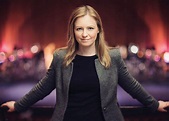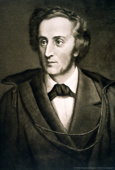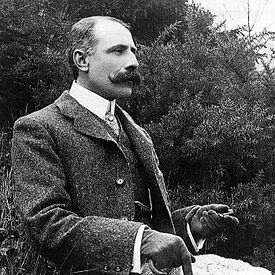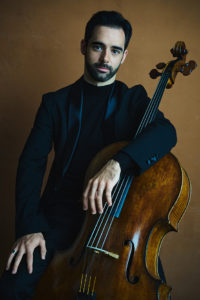Conductor Gemma New brought her musical brilliance and personable presence to Davies Symphony Hall, May 10 & 12. On May 11th, she led the SFS in the same program at UC, Davis. It was a program of music with distant origins. Overture, was created in Poland by Polish composer Grazyna Bacewicz while Poland was occupied by Germany, 1943. Englishman Edward Elgar wrote his beautiful, tragic ‘Cello Concerto in E minor, Opus 85, in 1919. Where did that music come from? Elgar had suspended his composing from the beginning of World War I. The horrors of the war kept his writing to brief, minor pieces. This music came from England but also from the fields and trenches of Belgium. Felix Mendelssohn’s Symphony No. 3 in A minor, Opus 56, Scottish, 1842. While Mendelssohn’s music was inspired by his visit to Scotland, its history, impressions of its dramatic seascape, and dances, Mendelssohn’s music was about music. It is a great symphony.
 Gemma New, Principal Conductor of the New Zealand Symphony Orchestra
Gemma New, Principal Conductor of the New Zealand Symphony Orchestra
Conductor Gemma New was called to replace Conductor Marta Gardolinska who had to withdraw due to a serious family illness.
A successful Polish conductor, Ms Gardolinska champions Polish composers. For that reason, Grazyna Bacewicz’s Overture opened the program. The music did not have its premiere until 1945. Bacewicz began as a violinist at the Warsaw Conservatory. In the 1930s she studied with the famous teacher, Nadia Boulanger, in Paris. This overture has so much great music in such a short time; it runs only 6 minutes. It is stunning to realize this and other works came forth from a terrible historic time. Warsaw began its rebellion to try to shake off the German hold, August 1, 1944. The Soviet Union’s Red Army did not bring the expected aide. The soldiers parked outside Warsaw, allowing the Germans to kill another quarter of a million Poles. As they left, the Germans set off the dynamite and wiring to explode and destroy all of Warsaw. In the midst of this, Bacewicz’s mind was active. The timpani opens and playful strings join in. She uses dissonance and some abrasive sounds, but it is always a musical language that one believes. There is a lovely and strong flute and then an exciting, delightful forward charge for the orchestra. I hope we may hear more of Grazyna Bacewicz
Elgar’s ‘Cello Concerto in E minor is one of my favorite pieces of music. I am a choreographer and chose the last two movements of this work to choreograph and perform as part of a dance concert on the program of Britain Meets the Bay, sponsored by the British Council. To choreograph this music, I listened to it maybe more often than the composer and also studied the war. On this program, the ‘cellist was Pablo Ferrandez. He has a unique approach to the music, playing it in his own interpretation. He occasionally bows very slowly across the ‘cello producing a disappearing sound. His touring this season includes major orchestras across the US: Cleveland, Pittsburgh, Seattle. In Europe he will perform in London, Rotterdam, Dusseldorf and more. Conductor Gemma New led Ferrandez and the SFS engaging them in the strength and agony of the music.

 Felix Mendelssohn, 1809-1847, composer and accomplished painter, linguist, poet. This is a watercolor of Lucerne by Mendelssohn.
Felix Mendelssohn, 1809-1847, composer and accomplished painter, linguist, poet. This is a watercolor of Lucerne by Mendelssohn.
Felix Mendelssohn’s Symphony #3 was dedicated to Queen Victoria. Mendelssohn, the Queen, and Prince Albert would gather and play new pieces by Mendelssohn. They formed a true friendship. In his program note, Larry Rothe mentions that Mendelssohn dropped the “Scottish” part of the title. There are sounds that can remind one of the winds sweeping around the islands and the mist that clings to buildings and people walking. The opening of the Symphony may recall the murder of Mary, Queen of Scots’ probable lover. However, no story line appears. One may identify sounds that could be developed from the wind itself. This is also about relationships between disparate sounds, how they oppose other sounds, and demonstrate they are alive by the motion of the rhythms. The music travels through moments when one could imagine folk dancers out doors, but an adagio appears after that mode to a contemplative, mysterious movement beyond specific thoughts. Once more, the music leads ahead of any “ideas” to label it. The quiet of the symphony changes to a sense of victory leaving behind any mysteries or cold winds. It reassembles itself and carries on. This is a great symphony. Oh, I wrote that at the beginning. It bears repetition. Listen to Mendelssohn’s Symphony #3, again.
Please note: A post about conductors who are women will follow this tomorrow.

 Pablo Ferrandez, ‘cellist
Pablo Ferrandez, ‘cellist